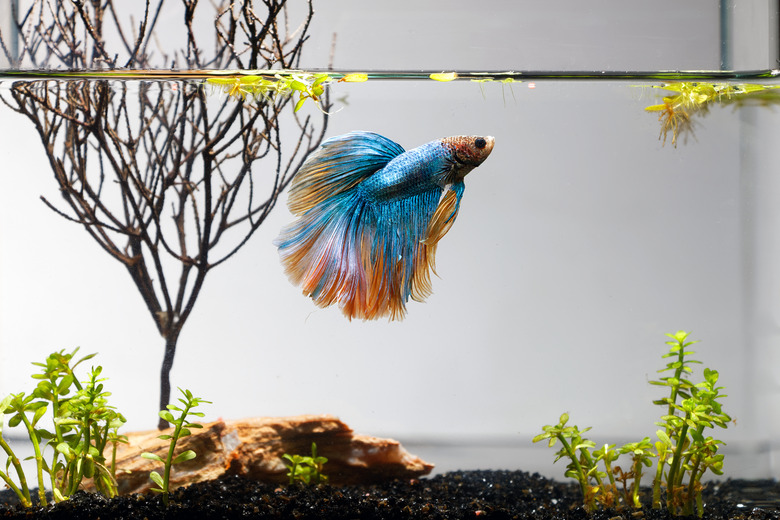How To Prevent And Treat Popeye In Betta Fish
Some types of fish are prized for their big, round, bulging eyes, such as certain types of goldfish. These fishes' eyes protrude more as they get older. However, if you see that your betta fish looks like a "betta popeye," it's a sign of a serious condition that requires immediate attention to prevent his death.
Understand betta fish eye bulge
Understand betta fish eye bulge
Betta popeye, also called betta fish eye bulge, is characterized by a betta fish's eye swollen abnormally, often with a white ring around the eye. The condition results from one of three causes, according to Betta Fish Rescue.
- Bacterial infection—if your betta's tank is less than sparkling clean, a bacterial eye infection could be what's causing your betta fish eye bulge.
- Internal disease—sometimes there's disease inside the body.
- Injury—when only one eye is affected, the cause could be an injury to the fish's eye that has then become infected.
Bacteria is the most common cause of betta popeye. Tuberculosis is the most common internal disorder that causes betta popeye. An injury to the fish could possibly be caused by tank decor or by netting a fish and moving it. With prompt treatment, most cases of betta popeye are curable. If the disease is advanced, your fish could end up losing one of her eyes or even dying.
Treat the water for bacteria
Treat the water for bacteria
If your betta fish lives alone rather than with tank mates, you can administer the medication he needs by adding it to the water he swims in. If he lives with companions such as neon tetras, sororities, or other compatible tank mates, you'll want to exile him to a hospital tank as soon as you notice that betta fish eye bulge, recommends BettaFish.org.
Because the disease is caused by poor water conditions, you must prepare a tank with ideal conditions for him to transfer into. Transferring into a tank where the temperature, pH, carbonate hardness (KH,) or general water hardness (GH) is off can further stress your fish and possibly cause his death, explains Betta Fish Rescue.
Ideal conditions for a betta fish include a neutral pH of 7.0. Most tap water has a pH of 6.5 to 7.5, the exact range that is acceptable according to Japanese Fighting Fish. Don't use distilled water, as the minerals contained in the water contribute to an ideal carbonate hardness (KH) that keeps the pH in the tank leveled out.
The temperature of 78 to 80 degrees is ideal for a betta, according to Betta Source. You may need to use a heater during winter or move your fish tank to a cool part of the room in the summer.
When your betta has popeye, plan to change the tank water completely every two to three days. Be sure to use a water conditioner to remove chlorine and other tap water additives that can make your betta sicker.
Add the medicine
Add the medicine
There are three types of treatments you can add to your fish's water to help with popeye:
Antibiotics: Ampicillin comes in capsules that you can break into your fish's water to treat popeye. Be sure to add a new capsule every time you do a water change. Smaller tanks might only require a half-capsule, so carefully follow directions on the medication's label.
Aquarium salts: Although bettas are freshwater fish, adding a little aquarium salt can help them build a healthy slime coat that helps protect from bacteria. Follow directions carefully and don't use it for more than 10 days to prevent harming your betta, advises Betta Fish Rescue.
Epsom salt bath: If you suspect that your fish sustained an injury that caused popeye on only one side of its head, administer an Epsom salt bath. In a separate tank, add 1 tablespoon of Epsom salt per gallon of water and let it dissolve thoroughly. Place your fish in the Epsom salt bath for 10 minutes before acclimating him back to his main tank.
Caution: If your fish appears to have trouble breathing or looks like he's losing consciousness, remove him from the Epsom salt bath and place him back in his clean, freshwater environment immediately.
